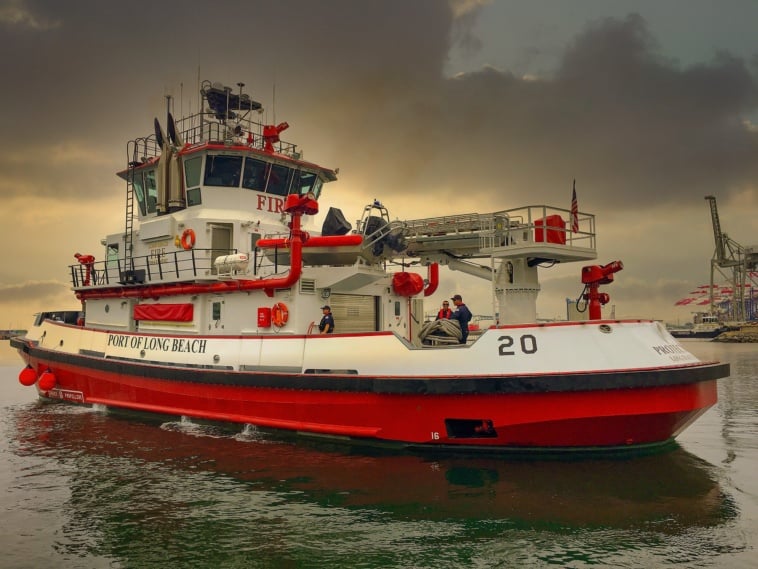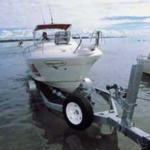So you’re out on the water, enjoying a relaxing day on your boat, when suddenly you smell something burning. Panic sets in as you realize there might be a fire on board. In this article, we’ll discuss essential tips on how to handle boat fires and, most importantly, how to prevent them in the first place. From fire extinguisher placement to regular maintenance checks, we’ve got you covered. Don’t let your day on the water turn into a nightmare – read on to learn how to keep yourself and your boat safe from the threat of fires.
Causes of Boat Fires
Boat fires can be caused by various factors, and understanding these causes is essential for preventing such incidents. The following are some of the common causes of boat fires:
Electrical malfunctions
Electrical malfunctions are one of the leading causes of boat fires. Faulty wiring, overloaded circuits, or damaged electrical components can generate sparks or excessive heat, igniting nearby flammable materials. Regular inspection and maintenance of the electrical system are crucial to prevent these malfunctions.
Fuel leaks
Fuel leaks are another common cause of boat fires. A small fuel leak near an ignition source can quickly escalate into a dangerous situation. It is crucial to regularly inspect fuel lines, fittings, and tanks for any sign of leaks and promptly address any issues that arise.
Improper use of flammable substances
Improper use or storage of flammable substances on a boat can also lead to fires. Negligence in handling gasoline, propane, or other flammable materials can result in accidental ignition. Proper storage and adherence to safety protocols for handling these substances are essential to prevent fires.
Overheating of the engine
The engine of a boat generates a significant amount of heat, and if not properly maintained, it can lead to overheating. Overheating can cause nearby materials to ignite and potentially result in a fire. Regular engine maintenance, including coolant checks and repairs, is necessary to prevent overheating.
Smoking onboard
Smoking onboard boats can be extremely dangerous and is a leading cause of boat fires. A carelessly discarded cigarette or ashes can easily ignite flammable materials within the boat. Strictly enforcing a no-smoking policy onboard and providing designated smoking areas on the deck can help minimize this risk.
Preventing Boat Fires
Preventing boat fires requires proactive measures and a commitment to safety. Here are some steps you can take to reduce the risk of boat fires:
Regular maintenance and inspection
Regular maintenance and inspection of your boat’s electrical system, fuel lines, engine, and other crucial components are essential to prevent fires. Have a professional marine electrician inspect your boat’s electrical system annually and perform routine checks on fuel lines and tanks to ensure there are no leaks or damage.
Proper storage and handling of flammable substances
Proper storage and handling of flammable substances are crucial to prevent fires on a boat. Gasoline, propane, and other flammable materials should be stored in approved containers and stored in well-ventilated areas away from potential ignition sources. Follow all safety guidelines for handling and storing these substances.
Installation of smoke and fire detection systems
Installing smoke and fire detection systems on your boat can provide critical early warning in the event of a fire. These systems can detect smoke, heat, or flames and sound an alarm, allowing for prompt action. Ensure that the detection systems are regularly tested and maintained to ensure their effectiveness.
Educate all passengers about fire safety
Educating all passengers about fire safety is essential to minimize the risk of fires on a boat. Teach them the importance of following safety protocols, such as not smoking onboard, using electrical devices responsibly, and reporting any signs of potential fire hazards. Conduct fire drills to familiarize everyone with evacuation procedures.
Follow safety regulations and guidelines
Adhering to safety regulations and guidelines is crucial for preventing boat fires. Understand and comply with all local, state, and federal safety regulations regarding fire safety equipment, extinguishers, and emergency protocols. Stay updated on any changes to these regulations to ensure your boat is always in compliance.
Recognizing Boat Fires
Recognizing the signs of a boat fire early on is crucial for prompt and effective response. Here are some indicators that a boat fire may be occurring:
Unusual smells
Unusual smells, such as the smell of burning plastic or electrical components, may indicate a boat fire. If you notice any strange or acrid smells that are not normally present, it is essential to investigate and take necessary action.
Smoke or visible flames
Smoke or visible flames are obvious signs of a boat fire. If you see smoke or flames onboard, it is crucial to take immediate action to minimize the risk to yourself and others.
Electrical issues
Electrical issues, such as flickering lights or intermittent power, can be indicators of an underlying problem that may lead to a fire. If you notice any electrical anomalies, it is essential to investigate and address the issue promptly.
Fuel smells or leaks
The presence of fuel smells or visible fuel leaks can indicate a potential fire hazard. If you detect the smell of fuel or notice signs of a leak, it is crucial to take immediate action to prevent a fire from occurring.
Overheating engine
An overheating engine can be a precursor to a boat fire. If your engine is showing signs of excessive heat, such as steam or smoke, it is essential to address the issue promptly and take preventative measures to minimize the risk of a fire.
Actions to Take during a Boat Fire
In a boat fire emergency, taking prompt, decisive action can save lives and minimize property damage. Here are the actions you should take if you encounter a boat fire:
Sound the alarm and call for help
In the event of a boat fire, the first step is to sound the alarm to alert all passengers and crew members. Call the local emergency services or the nearby coast guard to report the fire and provide them with accurate information about your location.
Deploy fire extinguishers if safe to do so
If the fire is small and controllable, attempt to extinguish it using appropriate fire extinguishers. Ensure that you are using the correct type of fire extinguisher for the specific fire, and follow the proper techniques for using it effectively.
Cut off fuel and electrical supply
To prevent the fire from spreading, immediately cut off the fuel supply to the engine and any other potential sources of ignition. Disconnect the boat’s electrical system to eliminate any electrical currents that could contribute to the fire.
Evacuate passengers to a safe location
The safety of all passengers and crew members is the top priority in a boat fire. Evacuate everyone to a safe location away from the fire, such as the designated life raft or a nearby rescue boat. Ensure that everyone is accounted for and provide assistance to those who need it.
Use firefighting equipment if available
If your boat is equipped with firefighting equipment, such as fire hoses or sprinkler systems, use them to control the fire. Follow the proper techniques for operating the equipment and direct the water or firefighting agent towards the base of the flames to extinguish them effectively.
Types of Fire Extinguishers
Different types of fire extinguishers are designed to combat specific types of fires. Understanding the different types can help you choose the appropriate extinguisher for a given situation. Here are some commonly used fire extinguishers:
Dry chemical extinguishers
Dry chemical extinguishers are versatile and can be used to extinguish various types of fires, including those fueled by wood, paper, flammable liquids, and electrical equipment. They contain a fine powder that smothers the fire and interrupts the chemical reactions necessary for combustion.
CO2 extinguishers
CO2 (carbon dioxide) extinguishers are effective in combating electrical and flammable liquid fires. The CO2 displaces oxygen, suffocating the fire and preventing it from spreading. These extinguishers are ideal for use in confined spaces or areas with delicate equipment that may be damaged by other types of extinguishing agents.
Foam extinguishers
Foam extinguishers are primarily used for flammable liquid fires, such as gasoline or oil fires. The foam forms a blanket over the fire, cutting off the oxygen supply and suppressing the flames. They can also be used on solid combustibles like wood or paper.
Water extinguishers
Water extinguishers are suitable for Class A fires, which involve ordinary combustible materials such as wood, paper, and fabric. The water absorbs heat from the fire and cools the burning material, extinguishing the flames. However, they should not be used on electrical fires or fires fueled by flammable liquids.
Proper Use of Fire Extinguishers
Knowing how to effectively use a fire extinguisher is crucial to combatting a boat fire. Here are some key guidelines for using fire extinguishers correctly:
P.A.S.S. technique
The P.A.S.S. technique is the recommended method for using a fire extinguisher effectively. It stands for:
- Pull the pin: Pull the pin located on the extinguisher’s handle to break the seal.
- Aim at the base: Aim the nozzle at the base of the flames, not the top.
- Squeeze the handle: Squeeze the handle to release the extinguishing agent.
- Sweep from side to side: Sweep the extinguisher from side to side, covering the entire fire area until the flames are extinguished.
Identify the type of fire before using an extinguisher
Different types of fires require different extinguishing agents. Before using a fire extinguisher, identify the type of fire involved to ensure you are using the correct extinguisher. Using an inappropriate extinguisher can worsen the situation or cause further damage.
Maintain a safe distance from the fire
When using a fire extinguisher, keep a safe distance from the fire to avoid getting too close to the flames or inhaling dangerous smoke. Stand at least six feet away from the fire and approach cautiously to minimize the risk of injury.
Aim at the base of the flames
When using a fire extinguisher, aim at the base of the flames, where the fuel source is located. Directing the extinguishing agent at the base suffocates the fire and prevents it from spreading further. Avoid aiming at the top of the flames, as this may spread burning materials.
Sweep the extinguisher from side to side
While aiming at the base of the fire, sweep the extinguisher from side to side to cover the entire fire area. The sweeping motion helps to distribute the extinguishing agent evenly and ensure thorough coverage. Continue sweeping until the flames are completely extinguished.
Evacuating Passengers
In a boat fire emergency, the safe and orderly evacuation of all passengers is of utmost importance. Here are some important steps to follow when evacuating passengers:
Designate one person to coordinate the evacuation
Assign one person to take charge of coordinating the evacuation. This individual will be responsible for guiding passengers to safety, communicating instructions, and ensuring everyone is accounted for.
Ensure everyone has a life jacket
Before evacuating, ensure that everyone onboard is wearing a properly fitted life jacket. Life jackets are crucial for buoyancy and can greatly increase the chances of survival in the event of an emergency.
Lower anchor and prepare emergency flares
If time permits, lower the anchor to stabilize the boat and prevent it from drifting. Additionally, gather and prepare emergency flares to signal for help if needed. Flares can attract attention from search and rescue teams, increasing the likelihood of a prompt response.
Assist children, elderly, and disabled passengers first
Give priority to children, elderly individuals, and passengers with disabilities during the evacuation. These individuals may require additional assistance and should be guided to safety before others.
Stay together and avoid panic
During the evacuation, it is crucial to stay together as a group and avoid panicking. Panic can lead to disorientation and increase the risk of accidents or injuries. Remind passengers to remain calm and follow instructions to ensure a smooth and efficient evacuation.
Communicating with Emergency Services
When facing a boat fire, effective communication with emergency services is vital. Here are some important points to consider when communicating with emergency services:
Provide clear and concise information about the situation
When calling emergency services, clearly describe the situation, including the fact that you are onboard a boat and facing a fire emergency. Provide accurate details about the size and location of the fire to help emergency responders assess the situation correctly.
Report the boat’s location and any identifiable landmarks
Provide emergency services with precise information about your boat’s location. Mention any nearby landmarks, buoys, or navigational aids that can help responders locate you quickly. GPS coordinates or specific coordinates from a marine chart can be highly beneficial.
Follow their instructions and maintain communication
Emergency services will provide instructions on how to handle the situation effectively. It is crucial to follow their guidance and maintain communication throughout the incident. Update them on any changes or developments that may affect the situation.
Inform them about the number of passengers and their condition
Inform emergency services about the number of passengers onboard and provide information about any injuries or medical conditions among the passengers. This information helps emergency responders allocate appropriate resources and provide necessary assistance.
Post-Fire Procedures
After a boat fire incident, certain procedures need to be followed to ensure the safety of everyone involved and the proper recovery of the vessel. Here are some post-fire procedures to consider:
Assess the damage and secure the vessel
Assess the extent of the fire damage to the boat. Check for any structural or mechanical issues that may have resulted from the fire. Secure the vessel and ensure it is safe for further inspection and repairs.
Document the incident for insurance purposes
Take detailed photographs and notes of the fire damage. This documentation will be crucial for insurance claims and to support any investigations into the cause of the fire. Provide as much information as possible to insurance representatives to ensure a smooth claims process.
Arrange for repairs and necessary inspections
Contact qualified marine professionals to assess and repair the damage caused by the fire. Address any electrical, mechanical, or structural issues promptly to restore the boat’s seaworthiness. Additionally, ensure that all required safety inspections and certifications are completed before returning the boat to operation.
Investigate the cause of the fire
Determining the cause of the fire is vital to prevent similar incidents in the future. Conduct a thorough investigation or consult with professionals to identify the root cause of the fire. Address any underlying issues that contributed to the fire and implement necessary changes or improvements to prevent future occurrences.
Review and improve safety measures
Use the fire incident as an opportunity to review and enhance the safety measures onboard your boat. Reassess fire safety equipment, conduct additional crew and passenger training, and update safety protocols as needed. Continuous improvement is key to preventing future boat fires.
Training for Boat Fire Emergencies
To effectively handle boat fire emergencies and prevent them, training is crucial. Here are some important training measures to consider:
Attend a certified boating safety course
Attending a certified boating safety course is an excellent way to gain knowledge and skills related to fire safety on boats. These courses cover essential topics such as fire prevention, proper use of fire extinguishers, evacuation procedures, and emergency response protocols.
Practice fire drills and emergency response procedures
Regularly practice fire drills and emergency response procedures with your crew and passengers. These drills help familiarize everyone with the appropriate actions to take in the event of a boat fire and ensure an organized and efficient response.
Stay updated on current regulations and standards
Stay informed about the latest regulations and safety standards related to boat fire safety. Keep up with any changes or updates to ensure your boat is in compliance with all relevant guidelines. Regularly review safety manuals and publications from trusted organizations to stay informed.
Continuously educate crew and passengers about fire safety
Fire safety education should be an ongoing process onboard your boat. Continuously educate your crew and passengers about fire prevention, safe practices, and emergency response procedures. Regularly reinforce the importance of following safety protocols and provide updates on any changes or improvements to safety measures.
Learn proper use of firefighting equipment
Ensure that all crew members are trained in the proper use of firefighting equipment, including fire extinguishers, hoses, and other available resources. Familiarize yourself with the different types of extinguishers and their uses to be prepared for different fire scenarios.
By understanding the causes of boat fires, implementing preventive measures, recognizing the signs of a fire, knowing the appropriate actions to take during a fire, and investing in proper training, you can significantly reduce the risk of boat fires. Always prioritize safety and be prepared to handle emergencies effectively to ensure the well-being of everyone onboard and protect your vessel.





